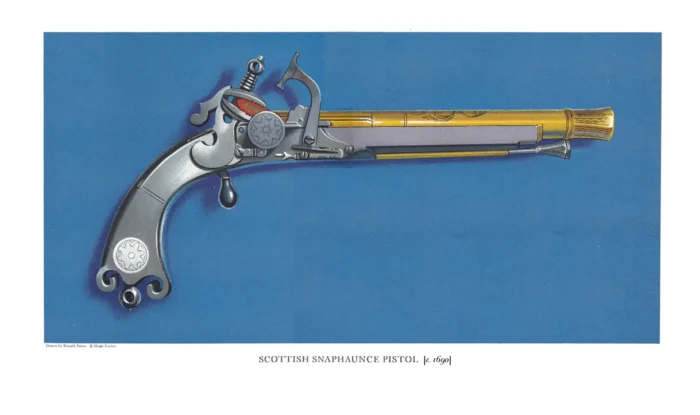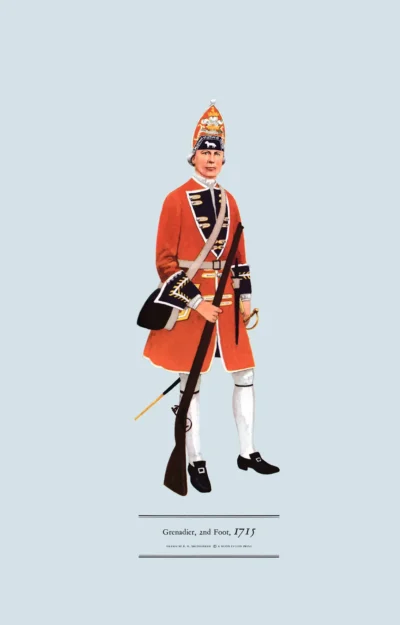Scottish Snaphaunce Pistol (c 1690)
£17.50
Scottish Snaphaunce Pistol, c 1690 (scroll down for a more detailed Description)
Published 1963 by © Hugh Evelyn Limited; drawn by Ronald Paton
Size: c. 43 x 25.5 cm [17 ″ x 10 ″] may vary slightly from printers’ cut 50 years ago
Printed on white cardstock weighing 112 g/sm2
Print is LARGE size – shipping is the same for 1 to 10 prints (based on largest print size in your order) – see Shipping & Returns
In stock
Description
Scottish pistols are attractive to collectors. They are scarce – a record suggests Highlanders in battle, having discharged their pistols, threw them away to take the broad-sword they knew so well. They are different from English or Continental pistols. In the 17th century Scottish gunsmiths made pairs of pistols with right- and left-hand locks. Despite the Union of the Crowns (1601) and Parliaments (1707) Scotland remained largely uninfluenced by the ‘auld enemy’ to the south. The traditional design of swords and pistols remained unchanged. Her links were closer to the Continent than to England anyway. This pistol was made at the end of the 17th century. It is made of brass, steel and silver. The barrel is old, light yellow brass, the inch at the muzzle octagonal, flaring outwards. Towards the breech it is round and grows in diameter with light line engraving at the muzzle, scroll leaf engraving in the centre and a fluted section at the breech. The steel stock ends at the butt in the ramshorn design with a silver rosette medallion on each side. There may have been brass inlay on the stock. Steel is used for the ramrod which fits in a 4-inch tube of brass on the underside of the stock. All the lock parts are of steel. There is no half cock or safety catch. The circular disc, the fence (1), on the end of the pan (2) repeats the rosette pattern. In a flintlock the steel (3) and cover are one so pulling the steel forward to the firing position covers the priming powder in the pan. When the steel is struck by the flint and driven back, the pan is automatically uncovered to allow the sparks to fall on the exposed powder. In the snaphaunce, the steel and pan cover are separate and must be placed in position individually. In this instance when the pistol is fired, an ingenious method of uncovering the pan is achieved by a rod connected from the inside of the lock to the cover. When the cock moves forward to strike it pushes the pan cover off. The cock (4) itself is forged in one with the tumbler which is activated by a horizontal scear (5) and not a vertical one as in flintlocks. Scottish pistols have a ball or tear drop trigger and no trigger guard and were all equipped with a steel belt hook on the other side. This belt hook is quite plain but the steel tang of the hook has a very pleasing open work pattern cut in it.
Additional information
| Weight | 0.0122 kg |
|---|---|
| Dimensions | 43 × 25.5 cm |

 American Starr Patent Jan. 15, 1856 Percussion Revolver, c. 1863
American Starr Patent Jan. 15, 1856 Percussion Revolver, c. 1863 



